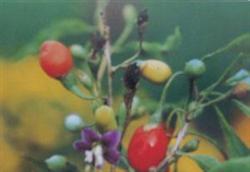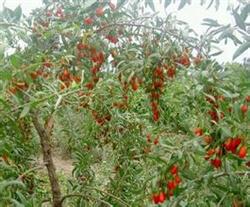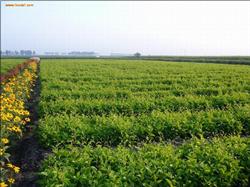Control of Lycium barbarum Colletotrichum

Symptoms of Chinese wolfberry anthracnose are commonly known as black fruit disease. It mainly harms green fruits, twigs, leaves, buds, flowers and so on. At the beginning of the disease, the green fruit has small black spots or irregular brown spots on the fruit surface, and when the disease spot expands continuously, half or the whole fruit blackens, and the fruit cable shrinks when drying; when the humidity is high, many orange colloidal spots grow on the diseased fruit; twigs, leaf tips and leaf edges are infected with brown semicircular spots, which become black after expansion, and wet rot appears on the surface of the disease, and there are sticky orange-red spots on the surface of the disease, that is, conidia and conidia of pathogens. The transmission route overwintered by mycelium and conidia on Lycium barbarum trees and ground residual fruits. In the spring of the following year, Rain Water spattered the bonded conidia and spread them to young fruits, flowers and buds. Through the wound or direct invasion, the incubation period was 4m6 days. The disease expands rapidly in rainy years and rainy seasons, showing the trend of heavy rain peak and light rain peak. The water film on the fruit surface is beneficial to the spore germination, and the spores germinate when there is water film or dew drop on the fruit surface at night when there is no rain. The disease is mild and spreads slowly in dry years or dry and no-rain seasons. the disease began from mid-May to early June and broke out from mid-July to mid-August. when the damage was serious, the rate of diseased fruit was as high as 80%. Control methods (1) cut off diseased branches and fruits in time after harvest, remove diseased fruits on trees and on the ground, and concentrate on burying or burning them. Remove the diseased and residual fruit from the tree and the ground again before the first rainfall in June and reduce the source of primary infection. (2) spray once before the first rainfall in June and add an appropriate amount of urea to kill the overwintering bacteria and enhance the disease resistance of the tree. (3) focus on spraying after rain, spraying time should be carried out within 24 hours after rain. To prevent the germination and invasion of conidia after transmission. (4) during the disease period, flood irrigation is prohibited, stagnant water in Qi garden is excluded after rain, and watering should be carried out in the morning to control field humidity and reduce fruit dew at night. (5) timely prevention of aphids and mites during the disease period to prevent pests from carrying spores to spread disease and cause wounds.
- Prev

Soil fertilizer management of Lycium barbarum
During the whole growth and development period from seedling cultivation to harvest, the grower must carry out a series of technical management measures in the field, which are collectively referred to as field management. According to the effective production cycle of pollution-free Lycium barbarum plants, field management can be divided into juvenile stage (1 ~ 4 years) and adult stage (more than 5 years). Field management is first of all soil.
- Next

Construction of fast-growing Lycium barbarum forest
Lycium barbarum has strong adaptability, can tolerate cold, drought and saline-alkali, and can grow in sandy loam, loam, loess and sandy wasteland. Chinese wolfberry likes cool climate, light and fat. Second, propagation method Lycium barbarum flowers solitary or several clusters in leaf axils, Corolla pink or mauve, with dark purple veins; pedicel thin.
Related
- Fuxing push coffee new agricultural production and marketing class: lack of small-scale processing plants
- Jujube rice field leisure farm deep ploughing Yilan for five years to create a space for organic food and play
- Nongyu Farm-A trial of organic papaya for brave women with advanced technology
- Four points for attention in the prevention and control of diseases and insect pests of edible fungi
- How to add nutrient solution to Edible Fungi
- Is there any good way to control edible fungus mites?
- Open Inoculation Technology of Edible Fungi
- Is there any clever way to use fertilizer for edible fungus in winter?
- What agents are used to kill the pathogens of edible fungi in the mushroom shed?
- Rapid drying of Edible Fungi

